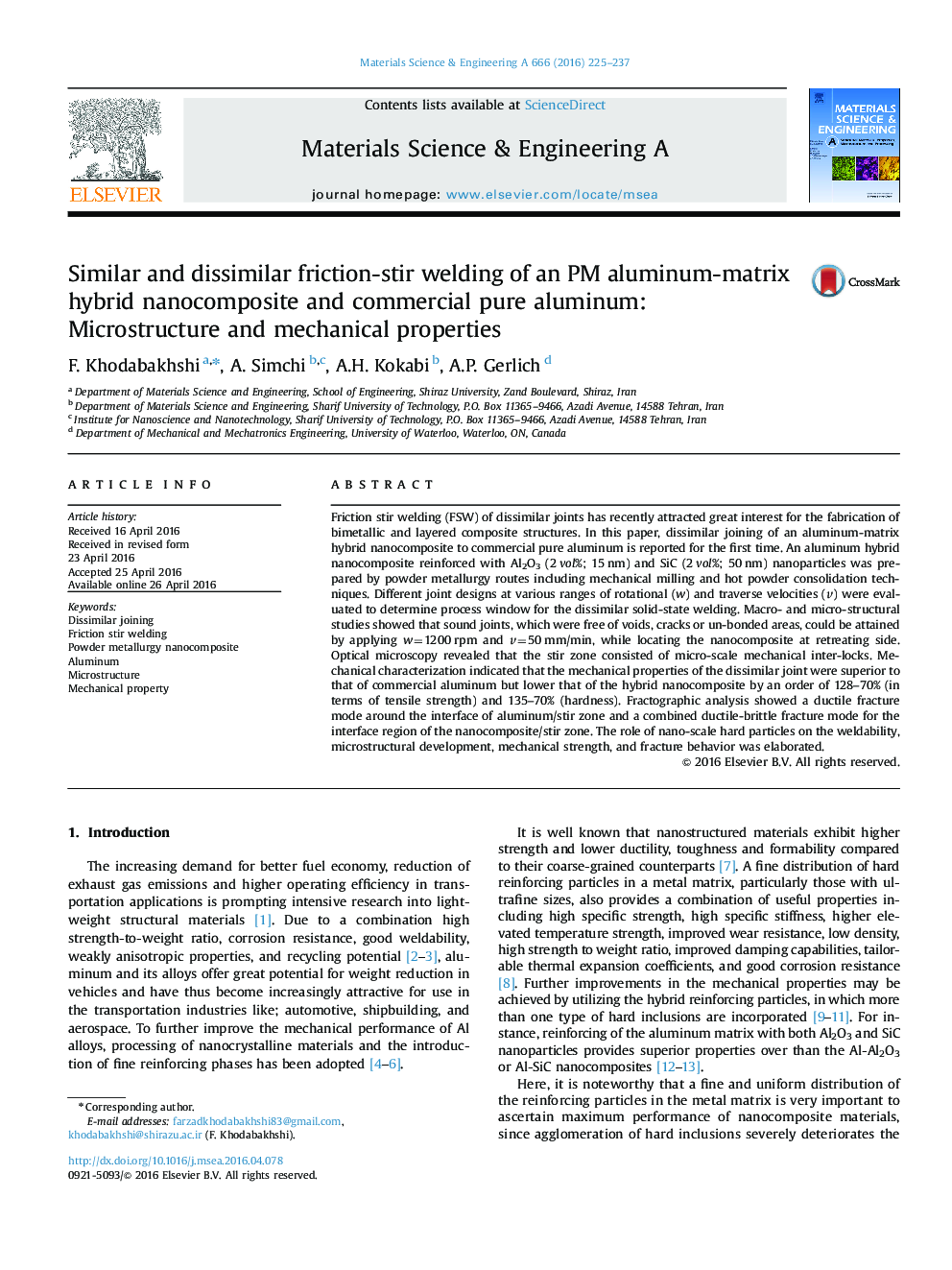| Article ID | Journal | Published Year | Pages | File Type |
|---|---|---|---|---|
| 7975428 | Materials Science and Engineering: A | 2016 | 13 Pages |
Abstract
Friction stir welding (FSW) of dissimilar joints has recently attracted great interest for the fabrication of bimetallic and layered composite structures. In this paper, dissimilar joining of an aluminum-matrix hybrid nanocomposite to commercial pure aluminum is reported for the first time. An aluminum hybrid nanocomposite reinforced with Al2O3 (2Â vol%; 15Â nm) and SiC (2Â vol%; 50Â nm) nanoparticles was prepared by powder metallurgy routes including mechanical milling and hot powder consolidation techniques. Different joint designs at various ranges of rotational (w) and traverse velocities (v) were evaluated to determine process window for the dissimilar solid-state welding. Macro- and micro-structural studies showed that sound joints, which were free of voids, cracks or un-bonded areas, could be attained by applying w=1200Â rpm and v=50Â mm/min, while locating the nanocomposite at retreating side. Optical microscopy revealed that the stir zone consisted of micro-scale mechanical inter-locks. Mechanical characterization indicated that the mechanical properties of the dissimilar joint were superior to that of commercial aluminum but lower that of the hybrid nanocomposite by an order of 128-70% (in terms of tensile strength) and 135-70% (hardness). Fractographic analysis showed a ductile fracture mode around the interface of aluminum/stir zone and a combined ductile-brittle fracture mode for the interface region of the nanocomposite/stir zone. The role of nano-scale hard particles on the weldability, microstructural development, mechanical strength, and fracture behavior was elaborated.
Related Topics
Physical Sciences and Engineering
Materials Science
Materials Science (General)
Authors
F. Khodabakhshi, A. Simchi, A.H. Kokabi, A.P. Gerlich,
